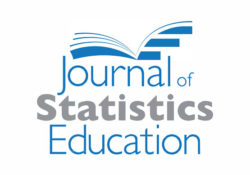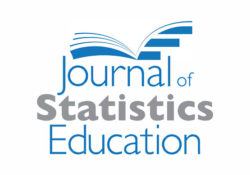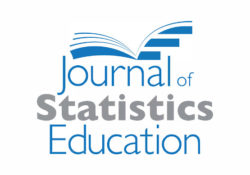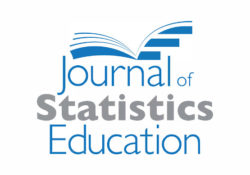tandfonline.com har udgivet en rapport under søgningen “Teacher Education Mathematics”: Abstract Abstract It is imperative to foster data acumen in our university student population in order to respond to an increased attention to statistics in society and in the workforce, as well as to contribute to improved career preparation for students. This article discusses 13 learning outcomes that represent achievement of undergraduate data acumen for university level students across different disciplines. Link til kilde
Like this:
Like Loading...
tandfonline.com har udgivet en rapport under søgningen “Teacher Education Mathematics”: Abstract Abstract Biostatistics is a critical skill to physicians in an evidence-based medicine era, but teaching basic statistical concepts is challenging. Students often experience anxiety caused by the complexity of statistics and might express negative attitudes toward the subject. We aimed to analyze the effect of an introductory biostatistics course using RStudio on attitude toward statistics and assess its acceptance among medical students. Forty-three 1st-year medical students were included. Pre- and post-course attitudes toward statistics were assessed using the Survey of Attitudes Toward Statistics (SATS-28) scale and technology acceptance was assessed by a Technology Acceptance Model scale at the end of the course. There was a statistically discernible (significant) gain in the scores of three of the four SATS dimensions:… Continue Reading →
Like this:
Like Loading...
tandfonline.com har udgivet en rapport under søgningen “Teacher Education Mathematics”: Abstract Abstract Many students who enroll in introductory statistics courses do not have positive attitudes about the subject. A 2012 wide-ranging study by Schau and Emmioglu showed that student attitudes do not tend to improve after completing an introductory statistics course. However, there is a need for more studies about attitudes in introductory statistics courses that utilize reform teaching methods. In this article, we present findings about student attitudes toward statistics in both a teacher-centered lecture-based class and a student-centered active learning class, taught by the same instructor. The overall results of this study were consistent with those reported in the study by Schau and Emmioğlu. Although on an overall level, it seemed that attitudes did not change for both… Continue Reading →
Like this:
Like Loading...
tandfonline.com har udgivet en rapport under søgningen “Teacher Education Mathematics”: Abstract Abstract Undergraduate research experiences (UREs), whether within the context of a mentor-mentee experience or a classroom framework, represent an excellent opportunity to expose students to the independent scholarship model. The high impact of undergraduate research has received recent attention in the context of STEM disciplines. Reflecting a 2017 survey of statistics faculty, this article examines the perceived benefits of UREs, as well as barriers to the incorporation of UREs, specifically within the field of statistics. Viewpoints of students, faculty mentors, and institutions are investigated. Further, the article offers several strategies for leveraging characteristics unique to the field of statistics to overcome barriers and thereby provide greater opportunity for undergraduate statistics students to gain research experience. Link til kilde
Like this:
Like Loading...
tandfonline.com har udgivet en rapport under søgningen “Teacher Education Mathematics”: Abstract Abstract Best practices in statistics and data science courses include the use of real and relevant data as well as teaching the entire data science cycle starting with importing data. A rich source of real and current data is the web, where data are often presented and stored in a structure that needs some wrangling and transforming before they can be ready for analysis. The web is a resource students naturally turn to for finding data for data analysis projects, but without formal instruction on how to get that data into a structured format, they often resort to copy-pasting or manual entry into a spreadsheet, which are both time consuming and error-prone. Teaching web scraping provides an opportunity to… Continue Reading →
Like this:
Like Loading...
tandfonline.com har udgivet en rapport under søgningen “Teacher Education Mathematics”: Abstract Abstract Although the use of tables, graphs, and figures to summarize information has long existed, the advent of the big data era and improved computing power has brought renewed attention to the field of data visualization. As such, it is crucial that introductory statistics courses train students to become critical authors and consumers of data visualizations. To that end, we have developed a semester-long, instructor-supported, group project that exposes students to this growing field. We have found this project to be an exciting and effective way to teach students the power of statistics and, more importantly, the critical role context plays when interpreting statistics. Among the many benefits of this project are hands-on learning, improved mathematical reasoning, and better… Continue Reading →
Like this:
Like Loading...
tandfonline.com har udgivet en rapport under søgningen “Teacher Education Mathematics”: Abstract Abstract We provide a computational exercise suitable for early introduction in an undergraduate statistics or data science course that allows students to “play the whole game” of data science: performing both data collection and data analysis. While many teaching resources exist for data analysis, such resources are not as abundant for data collection given the inherent difficulty of the task. Our proposed exercise centers around student use of Google Calendar to collect data with the goal of answering the question “How do I spend my time?” On the one hand, the exercise involves answering a question with near universal appeal, but on the other hand, the data collection mechanism is not beyond the reach of a typical undergraduate student.… Continue Reading →
Like this:
Like Loading...
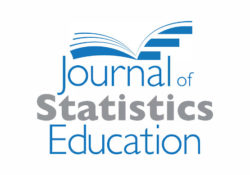
tandfonline.com har udgivet en rapport under søgningen “Teacher Education Mathematics”: Abstract Formulae display:?Mathematical formulae have been encoded as MathML and are displayed in this HTML version using MathJax in order to improve their display. Uncheck the box to turn MathJax off. This feature requires Javascript. Click on a formula to zoom. Abstract Bayesian statistics has gained great momentum since the computational developments of the 1990s. Gradually, advances in Bayesian methodology and software have made Bayesian techniques much more accessible to applied statisticians and, in turn, have potentially transformed Bayesian education at the undergraduate level. This article provides an overview of the various options for implementing Bayesian computational methods motivated to achieve particular learning outcomes. For each computational method, we propose activities and exercises, and discuss each method’s pedagogical advantages and… Continue Reading →
Like this:
Like Loading...
tandfonline.com har udgivet en rapport under søgningen “Teacher Education Mathematics”: Link til kilde
Like this:
Like Loading...
tandfonline.com har udgivet en rapport under søgningen “Teacher Education Mathematics”: Abstract Formulae display:?Mathematical formulae have been encoded as MathML and are displayed in this HTML version using MathJax in order to improve their display. Uncheck the box to turn MathJax off. This feature requires Javascript. Click on a formula to zoom. Abstract While computing has become an important part of the statistics field, course offerings are still influenced by a legacy of mathematically centric thinking. Due to this legacy, Bayesian ideas are not required for undergraduate degrees and have largely been taught at the graduate level; however, with recent advances in software and emphasis on computational thinking, Bayesian ideas are more accessible. Statistics curricula need to continue to evolve and students at all levels should be taught Bayesian thinking. This… Continue Reading →
Like this:
Like Loading...

